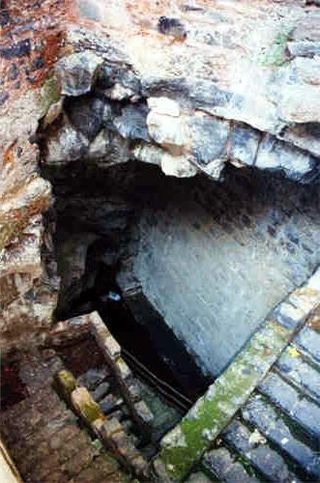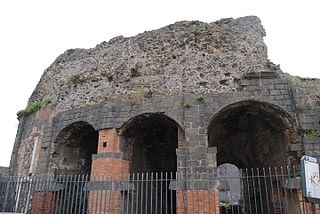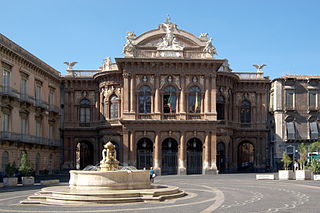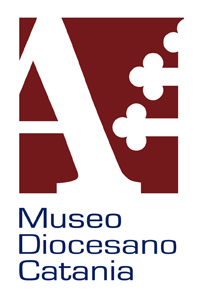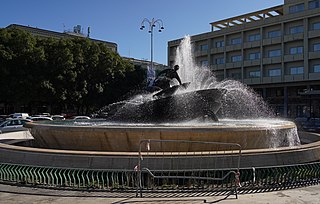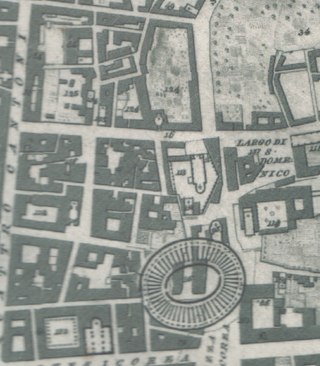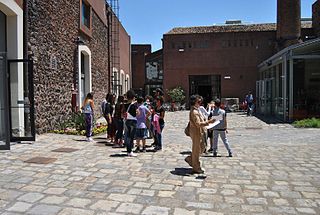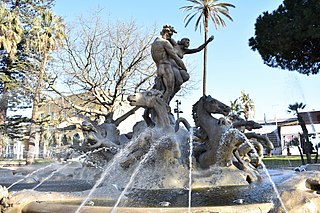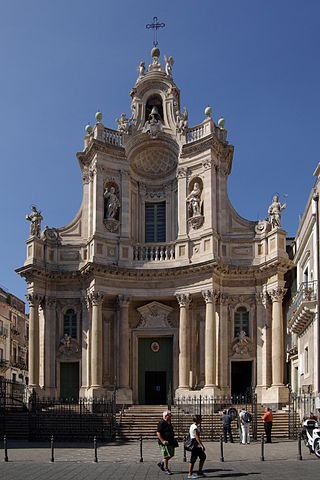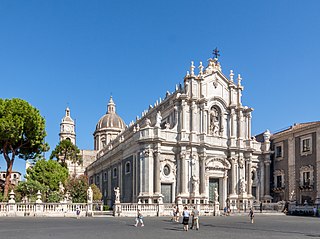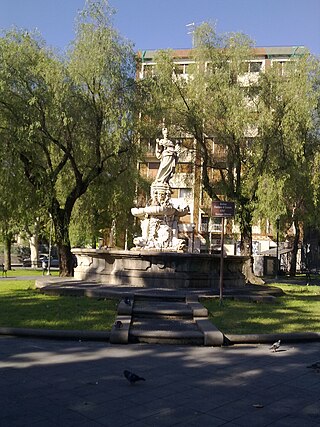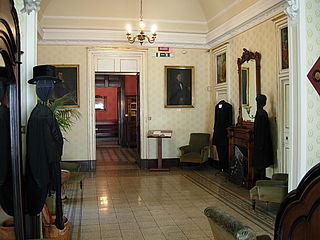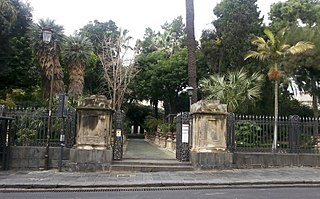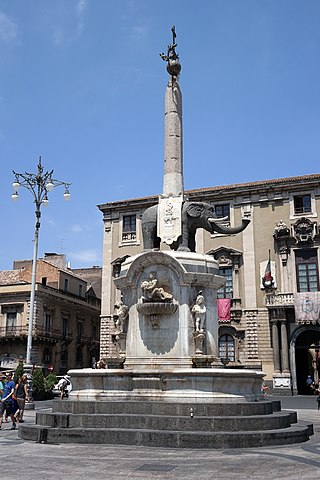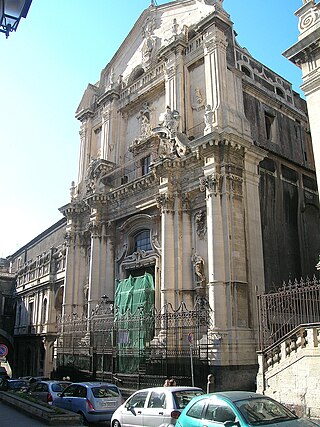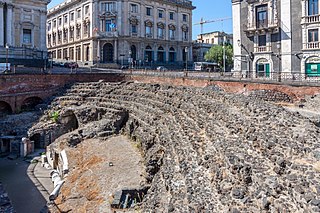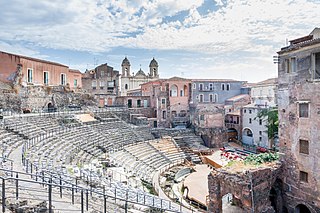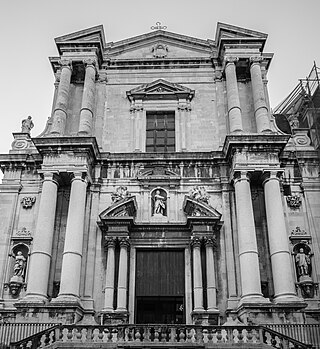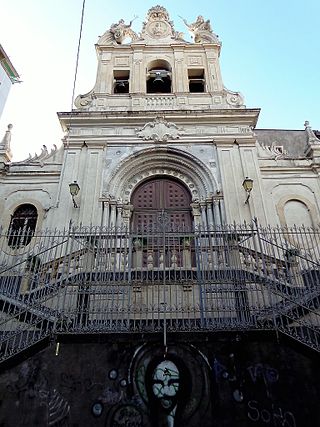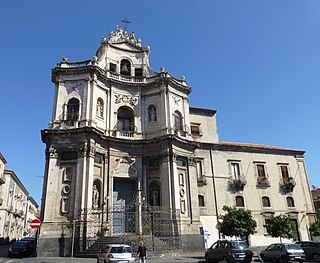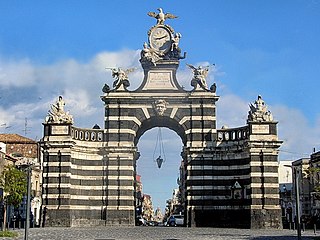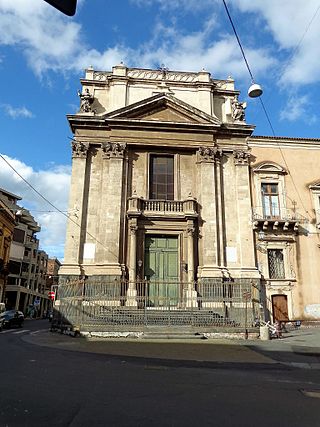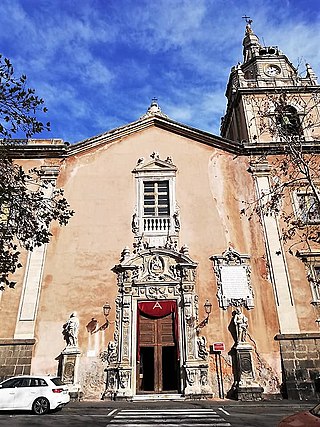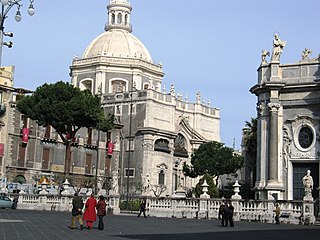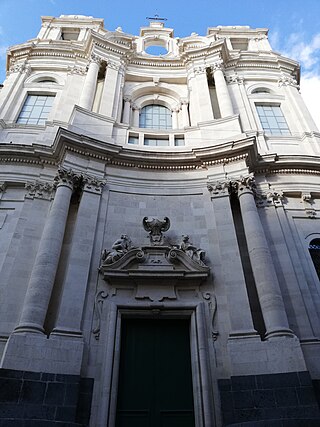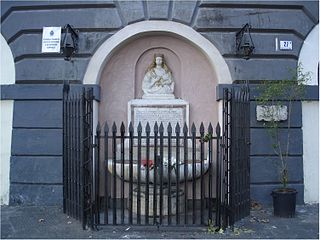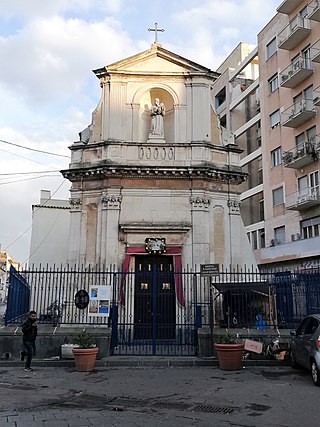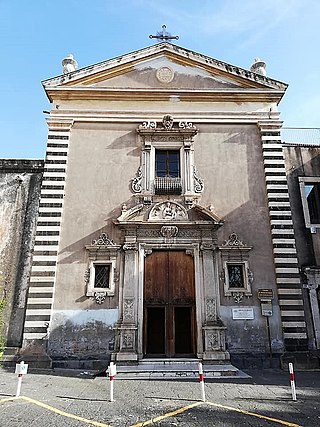38 Sights in Catania, Italy (with Map and Images)
Legend
Premium Sights
Book tickets, guided tours and activities in Catania.
Guided Free Walking Tours
Book free guided walking tours in Catania.
Welcome to your journey through the most beautiful sights in Catania, Italy! Whether you want to discover the city's historical treasures or experience its modern highlights, you'll find everything your heart desires here. Be inspired by our selection and plan your unforgettable adventure in Catania. Dive into the diversity of this fascinating city and discover everything it has to offer.
Sightseeing Tours in CataniaActivities in Catania1. Pozzo di Gammazita
The Well of Gammazita is a site located in the historic center of Catania, in the south-west area of the city adjacent to the ancient city walls called the curtain wall of Gamma Zita near the courtyard of the same name, and refers to a legendary tale that took place at the time of the Angevin domination in Sicily, during the War of the Vespers.
2. Odeon
The Odéon in Catania is located in the historic center of the city of Etna, next to the Greek Theater. Dating back to the second century AD, musical and dance performances were performed there, as well as rehearsals for the shows held in the nearby theater. It is still used today for summer shows.
3. Terme dell'Indirizzo
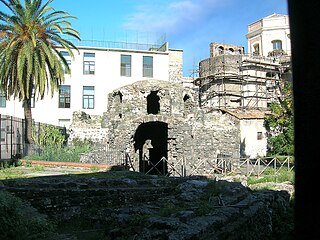
The Terme dell'Indirizzo (Baths of the Address), together with the Baths of the Rotonda, the Achilliane Baths, the Baths of Piazza Dante and the Baths of Sant'Antonio, are one of the many Roman thermal complexes in the city of Catania. Located in Piazza Currò a short distance from the Cathedral and Ursino Castle, they probably date back to the late imperial age, and are often referred to as one of the best preserved Roman baths in Europe.
4. Teatro Massimo Bellini
The Teatro Massimo Bellini is an opera house located on Piazza Vincenzo Bellini in Catania, Sicily, southern Italy. Named after the local-born composer Vincenzo Bellini, it was inaugurated on 31 May 1890 with a performance of the composer's masterwork, Norma. It seats 1,200.
5. Museo Diocesano
The diocesan museum of Catania is located in the Palazzo del Seminario dei Chierici adjacent to the cathedral of Sant'Agata. From the museum you can access both the terraces of the aforementioned palace and Porta Uzeda, from which you can admire two views: on one side Piazza del Duomo in Catania with the Elephant Fountain and Via Etnea with the Etna volcano in the background; on the other, the walls of Charles V, the Port of Catania with the Arches of the Marina up to the Ursino Castle. Also from the museum you can also access the underground complex of the Achillian Baths, a journey into the bowels of the city, where the Amenano river flows, whose waters rise to the surface in the nearby Fontana dell'Amenano between the aforementioned Piazza del Duomo and Piazza Alonzo di Benedetto, where there is the fish market.
6. Fontana dei Malavoglia
The Malavoglia Fountain is a monumental fountain in the city of Catania, located in Piazza Giovanni Verga, which includes an artistic sculptural group that stylizes an episode of Verga's famous work I Malavoglia (1881).
7. Ipogeo di Sant'Euplio
The Church of Sant'Euplio was a place of worship in Catania in the "Porta di Aci" district, opposite that of "Sant'Euplio ad Martyres", destroyed by bombing during World War II. Today the transept and the right wall of the single nave of the old building remain standing, which was rebuilt and inaugurated around 1964 in another area of the city, in the "Petriera" district.
8. Città della Scienza
The City of Science, also known as the City of Science of Catania to distinguish it from the Neapolitan structure of the same name, is an initiative of promotion and scientific dissemination managed by volunteers coming mainly from the University of Catania and located in an old sulfur refinery located in via Simeto in Catania, not far from the central station. It consists of an interactive science museum consisting of five sections called islands, an exhibition area distributed along a suspended corridor, an auditorium, some laboratories and a refreshment area.
9. Fontana di Proserpina
The fountain of the Rape of Proserpina is a monumental sculptural and hydraulic work of the city of Catania, built in 1904 and located at the end of Via VI Aprile in a lateral position to the main building of the central station of Catania.
10. Basilica Maria Santissima dell'Elemosina
The Ancient Royal and Eminent Basilica Collegiate of Our Lady of the Alms, better known as Basilica della Colleggiata, is a church in Catania, Sicily, southern Italy. Finished in 1794, it is an example of Sicilian Baroque.
11. Catania Cathedral
The Metropolitan Cathedral of Saint Agatha, usually known as the Catania Cathedral, is a Roman Catholic cathedral in Catania, Sicily, southern Italy. It was the seat of the Bishops of Catania until 1859, when the diocese was elevated to an archdiocese, and since then has been the seat of the Archbishops of Catania.
12. Fontana di Cerere
The fountain of Ceres, also known as the "fountain of the Village" or in the local language Matapallara dô Buŗgu or Ma'pallara dô Buŗgu or Tapallara dô Buŗgu, is a hydraulic and sculptural work of the city of Catania, now located in the center of Piazza Cavour, popularly known as "Piazza Borgo", from the district of the same name.
13. Casa Museo Giovanni Verga
The Giovanni Verga House Museum in Catania was the birthplace of the famous Italian writer, the greatest exponent of the literary current of verismo and one of the great protagonists of Italian literature
14. Orto Botanico
The Orto Botanico dell'Università di Catania, also known as the Hortus Botanicus Catinensis, is a botanical garden in Catania, Sicily, southern Italy. It is operated by the University of Catania botany department. This institution is a member of BGCI, with international identification code CAT.
Wikipedia: Orto Botanico dell'Università di Catania (EN), Website
15. Fontana dell'Elefante
The Elephant Fountain is a monument located in the center of Piazza del Duomo in the Sicilian city of Catania, designed by architect Giovanni Battista Vaccarini between 1735 and 1737. Its main element is a black basalt statue of an elephant, commonly called u Liotru, which has become the emblem of the city of Catania.
16. Chiesa di San Benedetto
San Benedetto is a late-Baroque architecture, Roman Catholic church and former Benedictine monastery in the city Catania, Sicily, southern Italy. The church facade faces Via Crociferi, parallels across via San Benedetto the former-Jesuit church of San Francesco Borgia, and both are about a block south along Crociferi from the church and convent of San Giuliano. Entrance to church and monastery appear to be through Piazza Asmundo #9 near the apse of the church.
17. Roman Amphitheater
The Amphitheatre of Catania is a Roman amphitheatre in Catania, Sicily, Southern Italy, built in the Roman Imperial period, probably in the 2nd century AD, on the northern edge of the ancient city at the base of the Montevergine hill. Only a small section of the structure is now visible, below ground level, to the north of Piazza Stesicoro. This area is now the historic centre of the city, but was then on the outskirts of the ancient town and also occupied by the necropolis of Catania. The structure is part of the Parco archeologico greco-romano di Catania.
18. Teatro Greco Romano
The Roman Theatre of Catania consists of the ruins of two open-air semicircular ancient Roman theatres, located between Piazza San Francesco, via Vittorio Emanuele, via Timeo, and via Teatro Greco in the center of Catania, Sicily, southern Italy. The site consists of a larger theatre and a smaller semicircular theatre, an Odeon. The structure is part of the Parco archeologico greco-romano di Catania.
19. Terme Romane della Rotonda
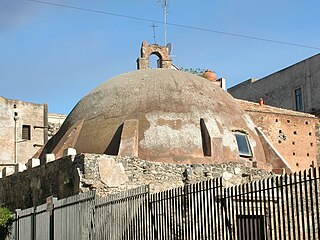
The Baths of the Rotonda are the remains of one of several Roman public baths in the city of Catania, Sicily. Built between the 1st and 2nd century CE, they are not far from the Roman theatre and the Odeon. In the Byzantine era, the church of Santa Maria della Rotonda with its characteristic dome was built upon the remains of the Roman baths. Its walls are still covered in medieval and baroque frescoes.
20. San Nicolò l'Arena
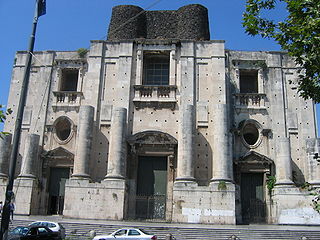
San Nicolò l'Arena is the title of both the Roman Catholic church and its adjacent and enormous Benedictine monastery in the city of Catania, Sicily, southern Italy. The facade of the church faces Piazza Dante.
21. Chiesa di San Francesco Borgia
San Francesco Borgia is a Roman Catholic church located on Via Crociferi #7, adjacent to the former Collegio Gesuita, and parallel to San Benedetto, and about a block south on Crociferi of the church and convent of San Giuliano, in the city of Catania, region of Sicily, southern Italy. The church is mainly used for exhibits, but still holds much of the original Jesuit artwork.
22. Chiesa di Sant'Agata al Carcere
Santa Agata al Carcere, sometimes called Santo Carcere or the Carcere church is a Roman Catholic church located on Piazza Santo Carcere #7, in the city of Catania, Sicily, southern Italy. It is one of three nearly adjacent churches dedicated in honor of St Agatha of Sicily in this neighborhood, the other two being Sant'Agata alla Fornace and Sant'Agata la Vetere.
23. Chiesa di San Michele Arcangelo ai Minoriti
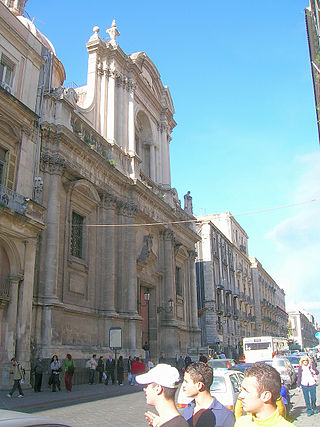
San Michele Arcangelo ai Minoriti is a Roman Catholic parish church and attached monastery in the city center of Catania, region of Sicily, Italy. The former monastery, to the left of the facade, now houses shops on the ground-floor, and above are the offices of the Provincial government and the Prefettura or Prefecture.
24. Chiesa di San Placido
San Placido is a Roman Catholic church and former-Benedictine monastery located on the piazza of the same name in Catania, Sicily, southern Italy. The complex, two blocks east of the Catania Cathedral, spans a polygonal block encompassed by the Via Vittorio Emanuele II on the north, the via Landolina to the east, the via Museo Biscari on a south diagonal, and to the west the piazza San Placido and Via Porticello. Part of the convent is occupied by the Palazzo della Cultura, used for cultural activities and exhibitions. The Monastero di San Placido also serves presently as the Archivio di Stato di Catania.
25. Villa Pacini
The Giardino Pacini, also known as Villa Pacini or the Villa Varagghi, is a small circular urban park located just south of the Porta Uzeda, on the seaward side of the elevated railway viaduct, in Catania, region of Sicily, Italy. It is partially encircled by Via Lavandaie and Via Jonica.
26. Porta Garibaldi
The Porta Garibaldi, originally built as the Porta Ferdinandea or Porta Ferdinanda, is a triumphal arch, built in 1768, located at the end of Via Giuseppe Garibaldi, between the Piazza Palestro and Piazza Crocifisso in the quartiere Fortino of Catania, region of Sicily, Italy. It was built to celebrate the marriage of the Bourbon king Ferdinand I of the Two Sicilies to the Austrian princess Maria Carolina d'Asburgo-Lorena.
27. Chiesa di San Giuliano
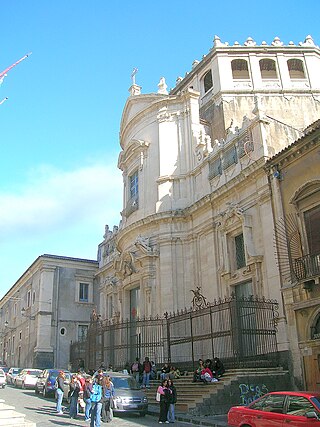
San Giuliano is a Roman Catholic church and attached convent located on Via Crocifero #36 of Catania, Sicily, southern Italy. It stands across from the Collegio dei Gesuiti, whose church of San Francesco Borgia also faces Crociferi. Two blocks north on Crociferi is the baroque church of San Camillo de Lellis.
28. Chiesa di Sant'Agata la Vetere
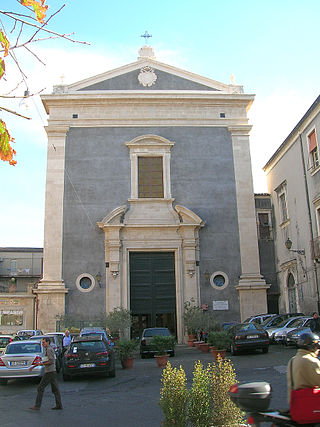
Sant’Agata la Vetere is a Roman Catholic church located in the piazza of the same name in Catania, Sicily, southern Italy. East of church and nearby, but facing in the other direction, are two other churches dedicated in honor of St Agatha of Sicily: the church of Sant'Agata al Carcere and two blocks east on Piazza Stesicoro is Sant'Agata alla Fornace, now known San Biagio.
29. Chiesa di San Domenico
San Domenico, also called Santa Maria la Grande is a Roman Catholic church and active convent located on piazza San Domenico in the quartiere di Santa Maria la Grande, in Catania, region of Sicily, Italy. The church stands about two blocks north of the church of Sant'Agata la Vetere on via Santa Maddalena. The neoclassical-style, late 17th-century church houses a few prominent altarpieces that survived the 1693 catastrophe in Catania.
30. Chiesa di Sant'Agata al Borgo
Sant’Agata al Borgo is a Roman Catholic church in Catania, Sicily, southern Italy. The church rises alongside via Etna. In front of the church is the tree-lined Piazza Cavour with its fountain of Cerere, while south across the piazza rises the church of the Consolazione. The Borgo is one of the original four districts (quartieri) of Catania.
31. Chiesa di San Biagio
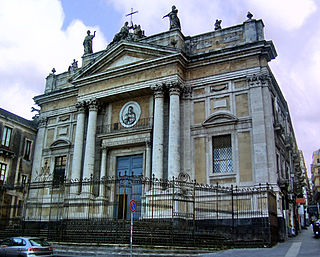
San Biagio, previously called Sant'Agata alla Fornace or La Fornace or Carcara is a Neoclassical architecture, Roman Catholic parish church located at the western edge of the Piazza Stesicoro in the quartiere San Biagio della Calcarella, of Catania, Sicily, southern Italy. The church overlooks a portion of the ruins of the former Ancient Roman amphitheater, while behind the apse in succession are two other churches dedicated in honor of St Agatha of Sicily: the church of Sant'Agata al Carcere and two blocks west facing the opposite direction is Sant'Agata la Vetere.
32. Badia di Sant'Agata
Badia di Sant'Agata or Abbey of St Agatha refers to an 18th-century Roman Catholic church and attached female convent located on Via Vittorio Emanuele #182 in the center of Catania, region of Sicily, Southern Italy. The Baroque style church facade is across the street from the left transept of the Cathedral of Catania.
33. Basilica Santuario di Maria Santissima Annunziata al Carmine
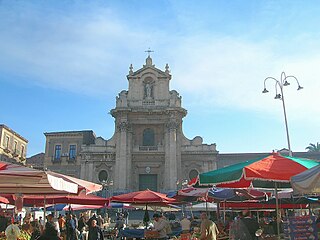
The Santuario della Madonna del Carmine also called Basilica di Maria Santissima Annunziata al Carmine, is a Roman Catholic minor basilica church and Marian sanctuary located on Piazza Carlo Alberto, in the town of Catania, Sicily.
Wikipedia: Santuario della Madonna del Carmine, Catania (EN)
34. Chiesa della Santissima Trinità
Santissima Trinità is a late-Baroque architecture, Roman Catholic church and former monastery (Badia) located on Via Vittorio Emanuele, corner of Via Santissima Trinità in the city Catania, Sicily, southern Italy. The monastery is now a science high school.
35. Fontana di Sant'Agata
The fountain of Sant'Agata, the second oldest in Catania, almost hidden in the walls of Via Dusmet, under the Archbishopric, is located near Porta Uzeda, in front of the arches of the railway viaduct. The people of Catania simply call it the Fontanella. According to popular traditions, the fountain was built in memory of the point from which the body of St. Agatha had left when it was transported, in 1040, by the Byzantine general Giorgio Maniace, to Constantinople.
36. Chiesa San Gaetano alle Grotte
San Gaetano alle Grotte is a church in Catania, region of Sicily, southern Italy. The flank of this small church faces Piazza Carlo Alberto where the minor basilica church of the Santuario della Madonna del Carmine is located. ,
37. Santa Maria di Gesù
Santa Maria di Gesù is a Roman Catholic parish church located on #18 of the piazza of the same name, near its intersection with Viale Regina Margherita, just northwest of Villa Bellini park, in the city of Catania, Region of Sicily, Italy.
38. Museo Civico Belliniano
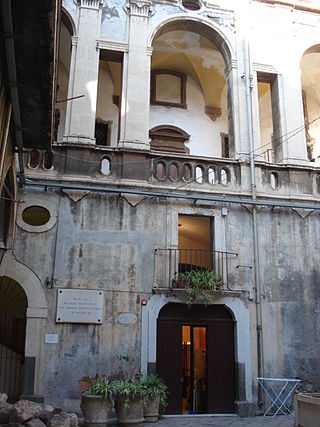
The Vincenzo Bellini Civic Museum is a museum based in Catania, housed in the rooms on the first floor of the Palazzo Gravina Cruyllas, one of the many noble residences of the Princes of Palagonia, in Piazza San Francesco, in front of the church of the same name.
Share
How likely are you to recommend us?
Disclaimer Please be aware of your surroundings and do not enter private property. We are not liable for any damages that occur during the tours.
